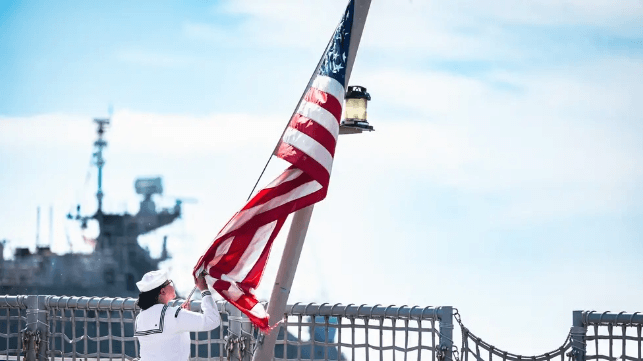Op-Ed: MARAD Should Follow Navy's Lead to Rebuild U.S. Maritime Strength

Earlier this week, CNO Admiral Daryl Caudle and Navy Secretary John Phelan delineated their goals for the Navy - readiness, accountability, and results. They also identified clear metrics for success. The Maritime Administration and the Department of Transportation should tap the table and immediately do the same.
While serving as the Maritime Administration (MARAD) Chief Counsel during the first Obama administration, I visited the rusty Ready Reserve Force (RRF) fleet. RRF crews repeatedly asked for additional funding, an ask I conveyed to the political appointees in the Department of Transportation (DOT). Sadly, fully funding the RRF wasn't a priority for the DOT and the Office of Management and Budget leaders of the day. The same could be said about increasing the maritime workforce, or strengthening shipbuilding.
MARAD also struggled with accountability and results. This struggle stemmed from long-standing conflicting priorities between MARAD, the US Agency for International Development (USAID), and the Departments of State and Energy. MARAD advocated for US financed goods to be shipped on US owned and crewed vessels. We fought to write the Congressionally-mandated cargo preference rule. The other agencies argued for simple money transfers. MARAD lost, and the result was the undercutting of the US maritime industry.
I applaud President Trump's Executive Order on April 9, 2025 entitled "Restoring America's Maritime Dominance." It is now the policy of the United States to revitalize and rebuild domestic maritime industries and workforce to promote national security and economic prosperity. It's a clear directive matched with much-needed dollars from Congress. It stops the decades long decay.
Admiral Caudle told Navy sailors and civilians that he wants to be judged by specific results at the end of his tenure, to include:
- Platforms delivered and repaired on time.
- Fully manned and combat ready ships.
- Ordnance production meeting contracted demand.
- Backlogs in repair parts eliminated.
- Sailors trained to the highest levels of mastery.
The Maritime Administration's equivalent is
- A fully functioning Ready Reserve Fleet.
- A robust merchant marine, sufficient to crew a two-front war AND regular operations.
- A thriving US shipbuilding and ship recycling industry.
- Stringent Jones Act compliance.
MARAD goals are intertwined with those set by the Navy. Both need a successful industrial base to build military and commercial ships. Success being ships built and repaired on time, on budget. Both need fully trained sailors. Both need fully manned ships. To put it bluntly, guns and butter have to move at the same time for the logistics tail in war to work.
I am encouraged by President Trump's executive order because it demonstrates top down coverage for a robust US maritime industry, something MARAD didn't have during my term in office. We fought with DOT to write the cargo preference rule and then got undercut by USAID and State. We fought to use Jones Act vessels during the 2011 Strategic Petroleum Reserve release and then got sidelined by the Department of Energy, which wanted the oil to move on foreign-flag vessels.
The Trump administration has given MARAD and DOT a once-in-a-lifetime opportunity. It's my recommendation that they seize it, match it with Secretary Phelan's directive of readiness, accountability, and results, and adopt CNO Caudle's warfighting charge to ensure the dominance of the US maritime industry and workforce.
K. Denise Rucker Krepp is a Coast Guard veteran and former chief counsel of the Maritime Administration.
The opinions expressed herein are the author's and not necessarily those of The Maritime Executive.
